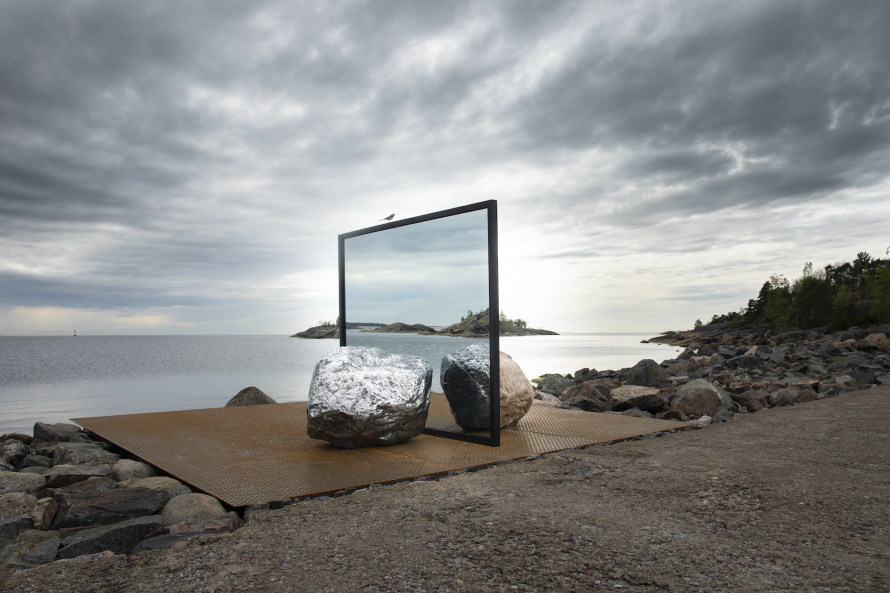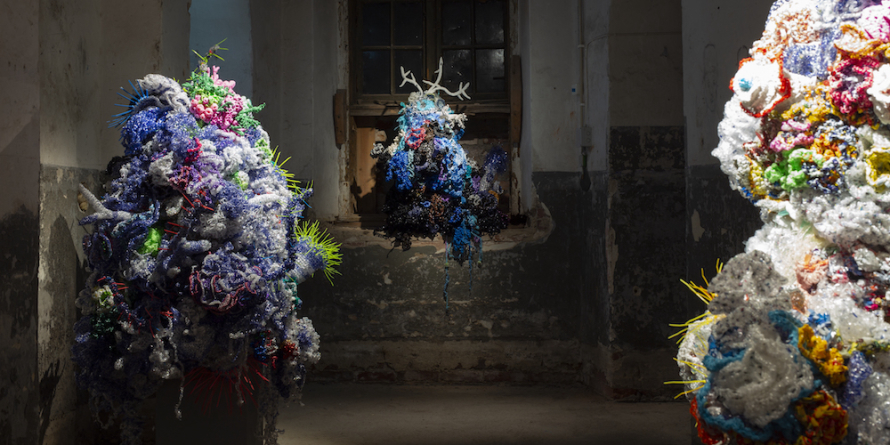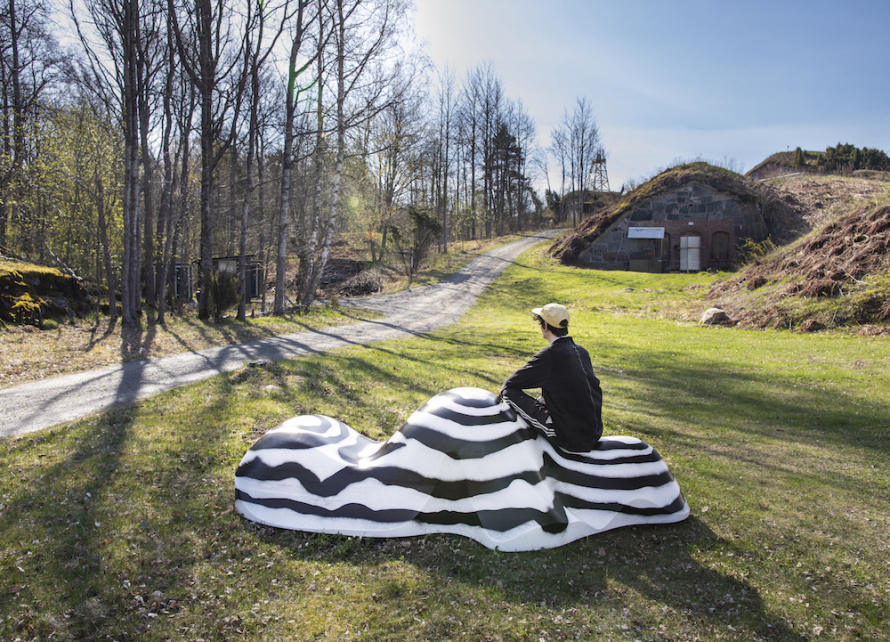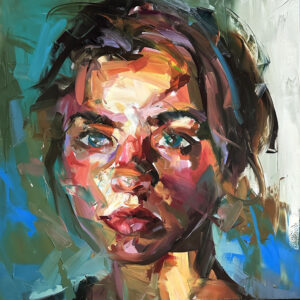
In the deep blue waters of the Baltic Sea, a few kilometers off the coast of Helsinki, Finland lies the island of Vallisaari. Home to a rich and diverse ecosystem, the craggy landmass is currently the setting of the inaugural edition of the Helsinki Biennial. Through September 26, an ambitious program of site-specific installations is interwoven within the lush forests and ruins of the island’s earlier lives for an international art presentation that doubles as a living example of the power of sustainable global tourism.
Sustainability is in fact the core of the Helsinki Biennial’s mission, with the city itself aiming to be carbon neutral by 2035. Soundtracked by the constant lull of the Baltic waves, this biennial is titled “The Same Sea,” reflecting the symbiosis of humankind and the natural world. Humanity’s relentless drive for progress is evident through the various historical iterations of Vallisaari itself: from a freshwater supply for seafarers in the Middle Ages to a military base in the twentieth century and eventually a tourist destination. The island and its past are integral to the vision of curators Pirkko Siitari and Taru Tappola. Vallisaari exists as a microcosm of change and accountability, a notion echoed through their dedication to responsible exhibiting. In collaboration with the Finnish Heritage Agency, the forestry company Metsähallitus and local biologists, historic sites on the isle were carefully selected, from an old cannon path and the converted gunpowder cellar to locales set in its endless nature (seventy percent of Vallisaari is a nationally protected greenspace).

Through the lens of Vallisaari’s cultural and natural value, forty-one international and Finnish artists offer interpretations of the Biennial’s four central themes: relationship to nature, boundaries and identities, time and change and empathy. With an emphasis on physical and symbolic notions of mutual dependency, artworks range from light displays to sound and video installations to mixed media, sculpture and painting.
The installations begin upon arrival at downtown Helsinki, with American artist Janet Echelman’s nylon and UHMWPE (ultra high molecular weight polyethylene) sculpture 1.78 (2021) suspended above Senate Square. The structure's seductive colour and forms float high above the street, reminding viewers of the interconnectedness of time and the physical world. In the same vein, the work Hype (2021) by anonymous duo ATTAKWAD touches on the underlying mathematical and geometrical structure of nature, with its installation of bronze mushroom copies, installed as if growing from the trees where their natural originals would

Another highlight is Finnish duo IC-98’s melancholic yet poignantly beautiful film Abendland (II: The Place That Was Promised) (2013). Utilizing a combination of pencil drawing and digital effects, a leafless tree gently sways in the darkness, suggesting the slow and cyclical nature of time. Finnish graffiti artist EGS also offers a nod to the passage of time in his work Archipelago of Past and Future (2021), consisting of eight sculptures representing lost and new islands.
Free and open to the public, inclusivity is key to the mission of the Helsinki Biennial, as can also be seen through the curators’ collaboration with local organizations like the BIOS research unit, whose installation emphasizes the essential nature of environmental discussions in the domain of economics. Celebrating the synthesis of art, nature and the sea, Finnish painter and Vallisaari meteorologist Topi Kautonen’s oil paintings encapsulate the sea’s evolving temperament. The Biennial also touches on a range of topical questions such as the artificiality of nation-state borders. The 3D animation 489 Years (2016) by Korean filmmaker and multimedia artist Hayoun Kwon explores geopolitical boundaries via a soldier’s narrative.
In a space where greenwashing is unfortunately all too common, this show feels like a break from the superficial and a movement towards truthful dialogue, and action. Through thoughtful programming and a radical commitment to ecological ethics and social sustainability, the Helsinki Biennial’s reflective approach has transformed the modus operandi for international art events.
Craving more culture? Sign up to receive the Cultured newsletter, a biweekly guide to what’s new and what’s next in art, architecture, design and more.










 in your life?
in your life?

